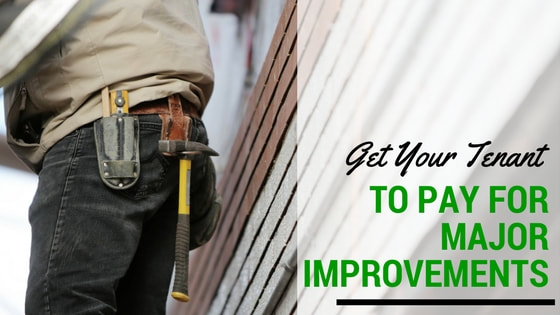The concept is simple: You are eligible to recoup from your tenants as much as 50% of the cost of major improvements to your property, by applying to HCIDLA for this specific program. Don’t be intimidated — the application process isn’t difficult.
The Rent Stabilization Ordinance (RSO) identifies capital expenditures as costs spent to improve a rental unit or a housing complex's common areas with updates or additions that last at least five years and meet other stipulations. Renovations or additions like a new roof or siding, updated carpeting or draperies, a new or repaired swimming pool or hot tub, fencing, washers and/or clothes dryers and the like all qualify. Simply put, a capital improvement must primarily benefit the tenant rather than the landlord and cannot be normal routine maintenance or repair work to the rental unit or building.
If a light bulb just turned on in your head because these criteria apply to an improvement you plan to make (or have made in the past year) to a building or unit you own, there's good news: You're likely eligible for a capital improvement rent pass-through.
As property managers in LA, we’ve seen firsthand the world of difference this program can make to our client’s bottom line. For example, an owner we manage for was recently despairing over the cost of a new bathroom he was about to construct for a tenant of his rent-controlled apartment building. After we filled out the application for the capital improvement rent pass-through, the HCIDLA approved it, and the owner was able to charge the tenant 50% of the cost to remodel the bathroom. Most repayment schedules have the payments broken up over five or six years. This might sound like a long time, but an alternative thought is to simply think of this method of recapture as being an avenue to roughly double the allowed 3% annual rent increases, with improved buildings as the result.
Before initiating, it certainly makes sense to think through your approach with your tenants. Prior to announcing an increase in their rent payments based on a capital improvement, you may want to meet with the tenants to present the details of the project to them. Here, you can outline how the proposed work might impact them from a standpoint of affecting the use of their home, and also the benefits they can look forward to after the improvement. Emphasizing what is being done to improve their living conditions is important.
A wise place to begin implementing these improvements is with those upgrades or additions that will substantially impact the attractiveness of buildings. Not only will this invite tenants to take notice of where the money is going and truly appreciate the improvement, but it will also show up in the form of increased rents when vacancies are filled. Smart owners know buildings with exteriors and common areas that catch the eye also catch higher-paying tenants. That’s an especially savvy practice when half of the cost is passed onto existing rent-controlled tenants.
Have you been putting off that new roof? What if you could cut the cost by 50%? Talk to your accountant about this program and its implications. They may have additional ideas and valuable thoughts from their own experience in helping other investor clients they work with. If you even think you might qualify for capital improvement rent pass-through on any of your recent or upcoming building improvements, begin exploring your options today. In a climate where landlord’s rights are diminishing, this program is a triumph for owners. Don’t just improve your property — improve your returns, too.

